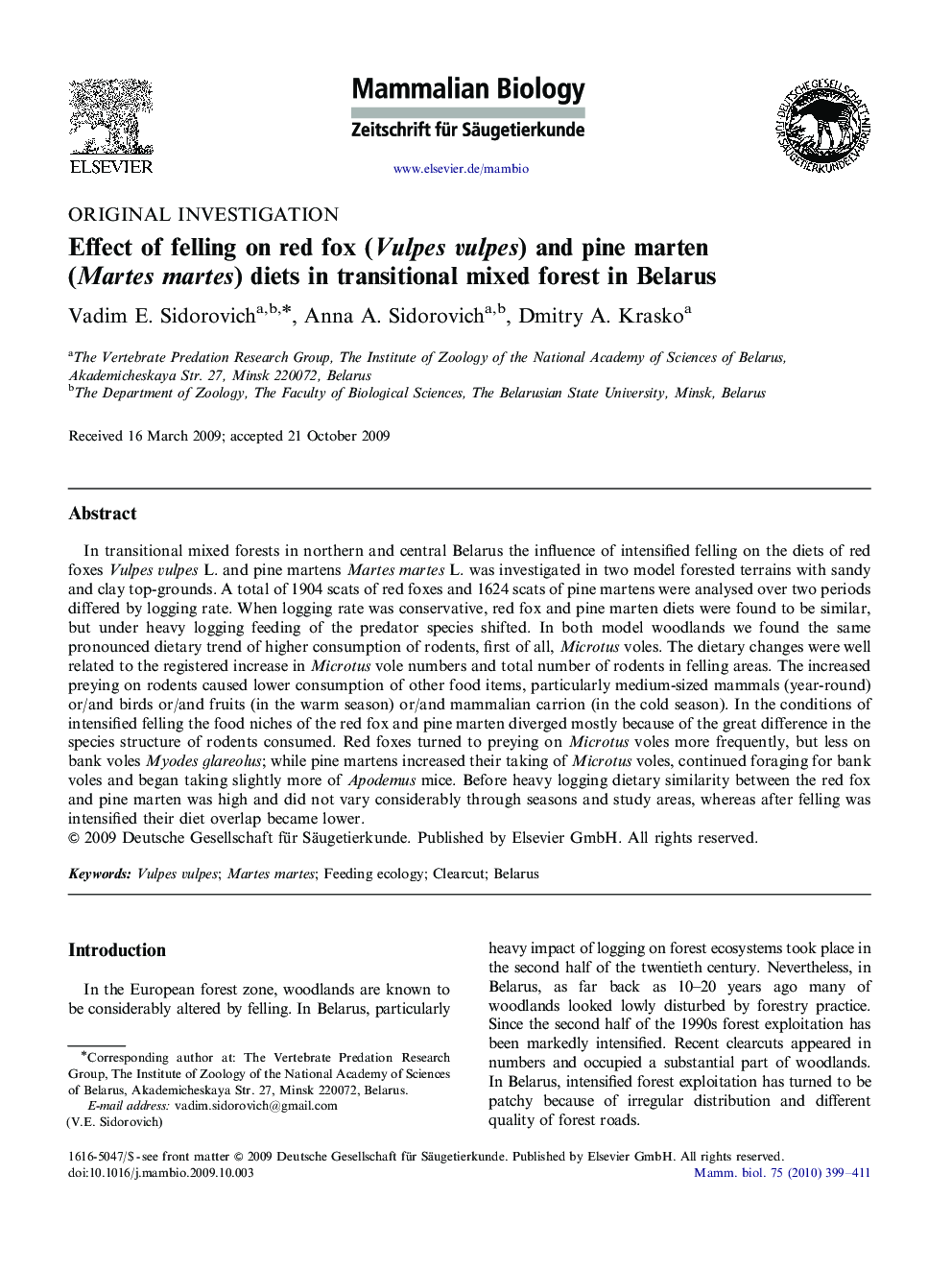| Article ID | Journal | Published Year | Pages | File Type |
|---|---|---|---|---|
| 2194205 | Mammalian Biology - Zeitschrift für Säugetierkunde | 2010 | 13 Pages |
In transitional mixed forests in northern and central Belarus the influence of intensified felling on the diets of red foxes Vulpes vulpes L. and pine martens Martes martes L. was investigated in two model forested terrains with sandy and clay top-grounds. A total of 1904 scats of red foxes and 1624 scats of pine martens were analysed over two periods differed by logging rate. When logging rate was conservative, red fox and pine marten diets were found to be similar, but under heavy logging feeding of the predator species shifted. In both model woodlands we found the same pronounced dietary trend of higher consumption of rodents, first of all, Microtus voles. The dietary changes were well related to the registered increase in Microtus vole numbers and total number of rodents in felling areas. The increased preying on rodents caused lower consumption of other food items, particularly medium-sized mammals (year-round) or/and birds or/and fruits (in the warm season) or/and mammalian carrion (in the cold season). In the conditions of intensified felling the food niches of the red fox and pine marten diverged mostly because of the great difference in the species structure of rodents consumed. Red foxes turned to preying on Microtus voles more frequently, but less on bank voles Myodes glareolus; while pine martens increased their taking of Microtus voles, continued foraging for bank voles and began taking slightly more of Apodemus mice. Before heavy logging dietary similarity between the red fox and pine marten was high and did not vary considerably through seasons and study areas, whereas after felling was intensified their diet overlap became lower.
